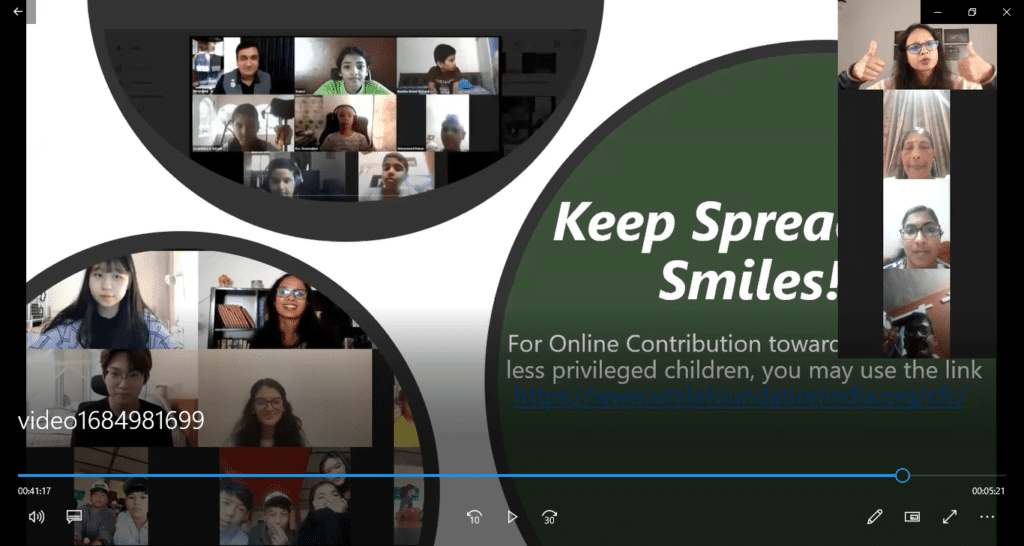What a change in the way we work, the way we teach and the way we learn. … The pandemic has set in. “Unmute yourself! Turn on your video! Check the chat box! Stop annotating!” These few phrases have become an integral part of our lives since we all shifted our working, teaching, and training online. Thence started the journey of educators to first educate themselves and then take classes online. Teachers have started seeking tools that help with online learning. Brands like Zoom, MS Teams, Zoho, Google Meet became a part of everyday parlance. Schools have progressed to more advanced education tools and enlisted support from Edtech companies. Some schools even became Microsoft-certified schools. Edtech platforms like Byjus and Vedantu saw a jump in their user base. Many organisations setup online K12 curriculum as their core business.
However, when we look at most of the big schools, the transition was rather smooth. This is because students here had access to at least a smartphone and/or tablet for logging into online classes. On the other hand, teachers were being trained to use video conferencing, blackboard, and many such softwares and applications. All these are aimed to somehow make online teaching and learning more interesting.
There still is a huge part of the school fraternity that does not have the type of academic infrastructure mentioned above. That’s where a huge chunk of India is still languishing. This could also be we have seen students not really learning much in online classes. The government and many NGOs in the education space are trying to ensure that students and teachers alike are made more digital savvy.
Reopening of schools on and off
Around Dussehra 2021, we had started seeing a significant dip in Covid cases. Schools had started to reopen and we were seeing an increased number of children, from primary to senior classes, going back to school. Some were even using school buses. Unfortunately, the new year has brought with it a spike in Covid cases. And with it, the comeback of school closures. This has created huge unease in the minds of teachers who had started to welcome their students back physically with renewed vigour.

Helpful tools for teachers
However, most teachers in India, despite almost 2 years of online schooling, still experience discomfort in taking online classes. So we witnessed a quick upsurge in school teachers looking for more and better applications and tools that can make their classes more interesting and students more attentive.
We organised one such session for primary school teachers of Vimala Hridaya Central School in Kerala. They have been running short of ways to keep their children engaged in online classes.
I got the opportunity to take the teachers through some very basic videos on Youtube that can be played in classes and could work as energizers for students. Then there are applications like Epic that take children back to the charm of reading books and short stories. This is especially true for the younger ones in primary classes who are also being subjected to, rather tortured through, online classes. And of course, there are a plethora of value-based movies and documentaries that can be streamed during online classes. These movies are sources of important lessons which can be taught to children.
To facilitate more exciting classroom experience these days there are AR (Augmented Reality) apps which schools can subscribe to at a nominal license fee. Such apps can actually make creatures come alive on a screen. Children can have a 3D view of the image and can understand the anatomy of various beings with a realistic view.
Back to basics
Most importantly, teachers have to stick to the basics. They must keep their PPT slides formatted, colourful, without spelling mistakes, and loaded with images. Presentations are their blackboard and that’s where children will love to interact. Mixing of sessions by interesting speakers from across the globe is much easier online these days. This should be done regularly.
All this calls for significant effort. But it’s all worth it when you have an engaged class that is interactive and keen to learn more.
Hybrid teaching and learning
With hybrid form of teaching and learning emerging as the norm and children already gaming online, teaching can definitely be made fun by using gamification. There should be goals, there should be challenges, and there should be rewards. Make every lesson a fun one for children. Once a challenge is accepted and solution found, there have to be rewards–a clap emoji or even a musical appreciation. Teachers have to upskill themselves, they have to become more digital literate and master the platform they are taking their classes on.
I do hope that the teachers had a fun time with me as I hope the students have with them.









